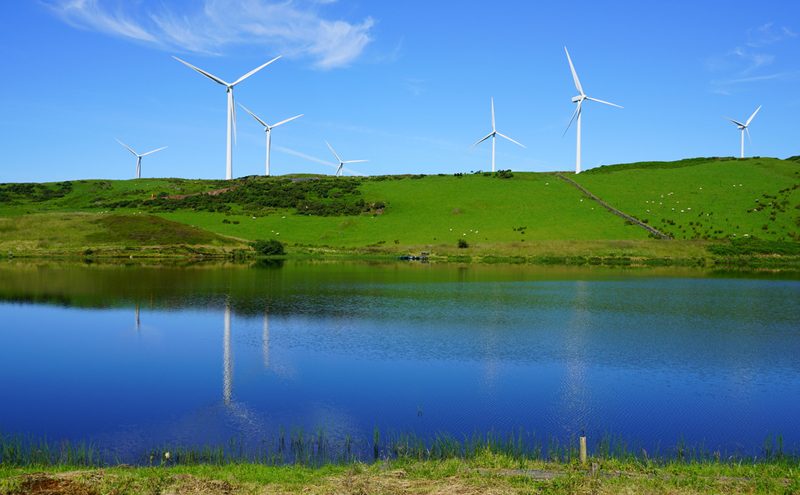
A report released on 26 March by the not-for-profit organisation the Energy and Climate Intelligence Unit (ECIU) presents findings that suggest repowering onshore wind farms which are reaching the end of their lives could increase the country’s generating capacity by more than 1.3GW, and thereby “cut carbon, reduce bills and support local communities”.
Report author and ECIU energy analyst Jonathan Marshall said that with onshore wind the cheapest source of new electricity generation, repowering with the most efficient modern turbines is a cost-effective way to secure new capacity.
“It makes sense to repower sites of the earliest wind farms, which tend to be in locations that have the best wind resource,” he said.
“Existing infrastructure including network connections can also be reused or upgraded at costs lower than for new sites.”
The report’s analysis of a database of onshore wind farms across England, Scotland and Wales shows there are close to 60 projects with over 750 turbines that will reach their 20th anniversary within the next five years.
Failing to stimulate repowering risks these productive sites closing, it said.
Repowering could also benefit local communities through payments from developers, with a potential pay-out of more than £100m from this first wave of projects, more than 80% of which would flow into rural regions.
Conservative MP for Middlesbrough South and East Cleveland Simon Clarke said: “Upgrading our oldest wind farms with the latest technology would deliver a big boost of clean power to the grid at a time when wind is already making a record contribution, while delivering cash for the communities that have hosted these sites for years.
“It would also provide a market for the newly reinvigorated British steel industry, cut greenhouse gas emissions faster and, given that repowering is the cheapest way for us to expand electricity generation, reduce bills for businesses and consumers.”
RenewableUK executive director Emma Pinchbeck said: “As this report shows, the onshore wind industry’s supply chain offers industrial benefits to sectors such as the UK’s steel industry producing high-quality material for turbine towers.
“But onshore wind still needs a route to market, so it’s encouraging to see ministers examining possible ways forward for this technology, which has consistently enjoyed a high level of public support.”
Roz Bulleid, Head of Climate & Environment Policy at EEF, the manufacturers’ organisation, said:
“The ECIU makes a good case for a systematic repowering of onshore wind farms as given UK industrial electricity prices are among the highest in Europe all options for delivering lower cost electricity should be on the table. Government needs to be clear about it its policy in this area and, if it feels it can support repowering of existing onshore wind politically, facilitate a conversation on what is needed to make sure the maximum potential is delivered at least cost to consumers.”
Commenting on the situation in Scotland, specificallly, Fabrice Leveque, Senior Policy Manager of Scottish Renewables, said: “This report demonstrates the potential for repowering of Scotland’s fleet of onshore wind turbines, and specifically the £77 million per year which doing so would save compared with obtaining electricity from gas.
“Our onshore wind farms deliver 8,000 jobs, £12 million a year in community benefit payments, and considerable economic benefits to Scotland. As the oldest of them begin to approach the end of their operational life government and industry must work together to ensure those benefits are secure.
“The UK Government’s own figures show onshore wind is the cheapest form of new electricity generation, and that Scotland’s onshore wind sector is worth in excess of £1.5 billion a year to the Scottish economy.
“Consumers, local businesses, and Scotland’s supply chain can continue reap the benefits from onshore wind if we approach repowering as the enormous opportunity which it is.”
You can read the full report here.







